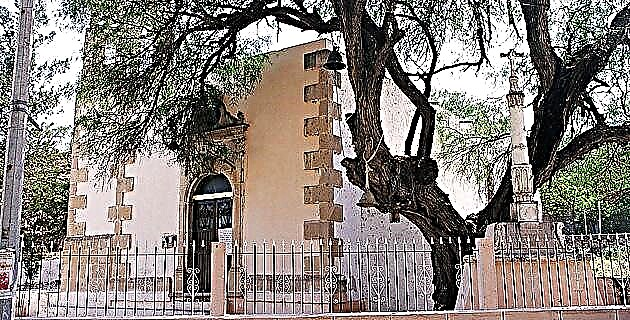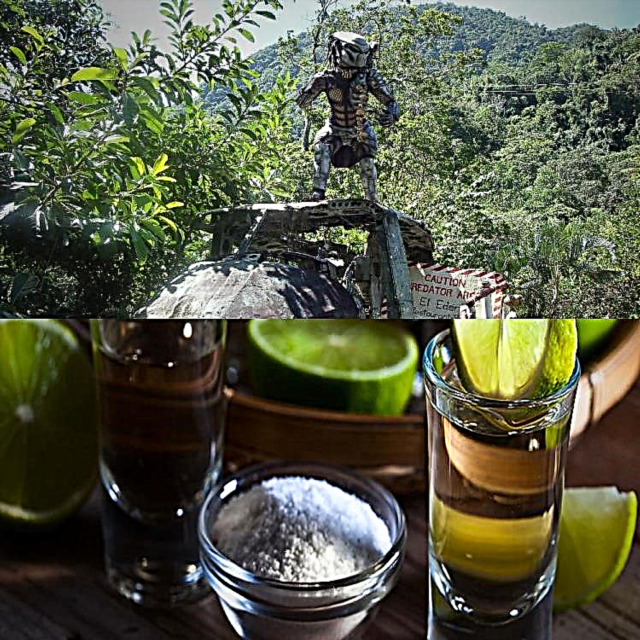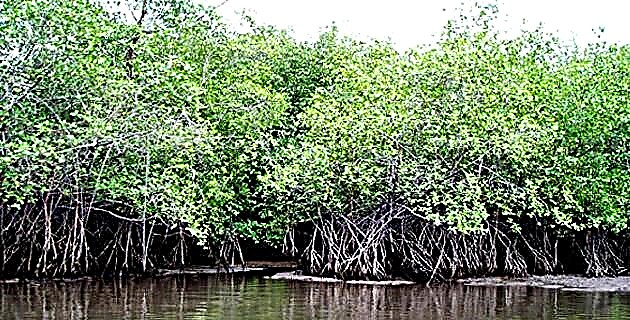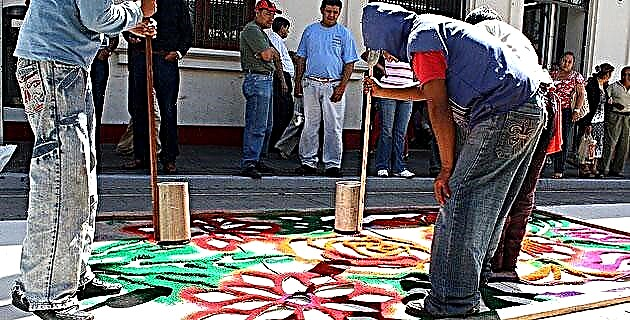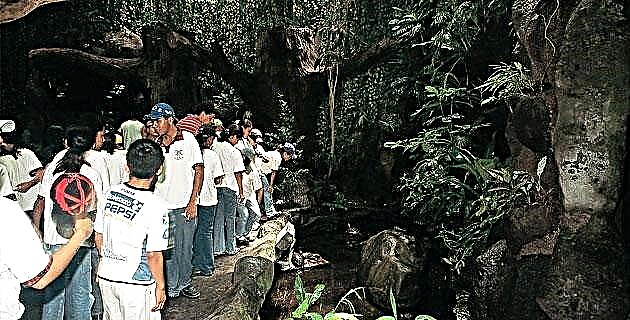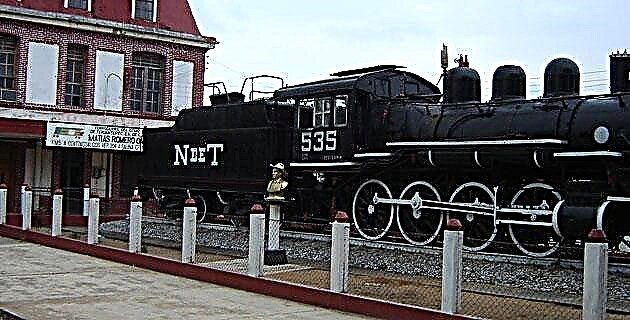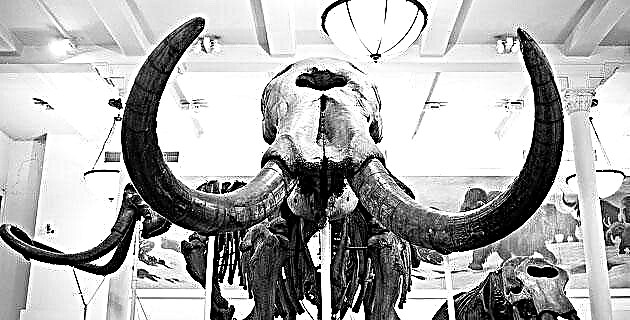
30,000 years ago a human group made up of no more than thirty people roamed what is now known as El Cedral, in the state of San Luis Potosí ...
The members of the group were calmly looking for their food, they knew that near a spring the animals gathered to drink. Sometimes they hunted them, but frequently they only took advantage of the remains left by the carnivores, or those of recently killed animals, since it was much easier to simply cut up the corpses.
To their surprise and delight they discover that this time a mammoth is trapped on the muddy shore. The great beast barely survives, the effort to get out of the mud and the days it has not eaten have put it on the brink of death. Miraculously, the felines have not noticed the animal, so this group of first settlers of present-day Mexico is preparing to take advantage of the dying proboscide in a great feast.
After waiting a few hours for the death of the mastodon, preparations begin to exploit all the resources that the pachyderm offers. They use some large pebbles, slightly sharpened by the detachment of two flakes, to produce a sharp, sharp edge with which they will cut. This is a task that involves several members of the group, since it is necessary to cut the thick skin in precise areas, to be able to detach it by pulling strongly on it: the objective is to get a large piece of leather to make clothes.
The skin is worked near the place where it was dismembered, in a flat area; First, the internal area is scraped with a circular stone tool, similar to the shell of a turtle, to remove the fat covering from the skin; Later, salt will be added and it will be put to dry in the sun. Meanwhile, other members of the group prepare strips of meat and add salt to them; certain parts are smoked, to be transported wrapped in fresh leaves.
Some men recover fragments of the animal that are necessary for them to make tools: the long bones, the fangs and the tendons. The women carry the bones of the tarsus, whose cubic shape allows them to be used to form a fire in which the meat and some entrails will be roasted.
The news of the discovery of the mammoth quickly crosses the valley, thanks to the timely notice of one of the young men of the group, who informs the relatives of another band whose territory is contiguous to his. This is how another contingent of approximately fifty individuals arrives: men, women, children, youth, adults, the elderly, all willing to share and exchange objects during the community meal. Around the fire they gather to listen to mythical stories, while they eat. Then they dance happily and laugh, it is an occasion that does not occur often. Future generations will return to the spring, for the years 21,000, 15,000, 8,000, 5,000 and 3,000 before the present, as the stories of the grandparents about large feasts of meat around the fire make this area attractive.
In this period, defined by archaeologists as Archeolithic (30,000 to 14,000 years before the present), food is abundant; Large herds of deer, horses and wild boar are in constant seasonal migration, allowing small, fatigued or sick animals to be hunted with ease. Human groups supplement their diet with the collection of wild plants, seeds, tubers and fruits. They do not worry about controlling the number of births, since when the size of the population threatens to limit natural resources, some of the youngest separate to form a new group, going further into unexplored territory.
Occasionally the group knows about them, as on some festivities they return to visit him, bringing new and strange objects, such as seashells, red pigment and rocks to make tools.
Social life is harmonious and egalitarian, conflicts are resolved by fissioning the band and looking for new horizons; Each person does the job that is easiest for them and uses it to help the group, they know that they cannot survive alone.
This placid existence would last approximately 15,000 years, until the climatic cycle that allowed the herds of megabeasts to graze throughout the national territory is broken. Little by little the megafauna is becoming extinct. This puts pressure on groups to innovate their technology to respond to the extinction of the animals that served them as food, changing their scavenging strategy for intensive hunting. Millennia of observation of the environment of this vast territory allows human groups to know a great variety of rocks. They know that some have better qualities than others to make a projectile point. Some of them were thin and elongated, and a central groove was made that covered a large part of one of their faces, a manufacturing technique that is now known as the Folsom tradition. The groove allowed them to be sleeved with tendons or vegetable fibers in large wooden rods, from which the spears were produced.
Another projectile point making tradition was the Clovis; This tool was narrower, with a wide and concave base, in which a groove was made that never exceeded the central part of the piece; This made it possible for them to be stacked into smaller sticks, with vegetable resins, to be used as darts along with wooden propellants.
We know that this thruster, which years later would be called atlatl, increased the force of the dart's shot, which would surely bring down the game in cross-country pursuit. Such knowledge was shared by various groups in the north, center and south of Mexico, but each of them will leave their style in terms of the shape and size of the tip. This last feature, more functional than ethnic, adapts technological knowledge to the characteristics of the local raw material.
In northern Mexico, during this period, known by archaeologists as the Lower Cenolithic (14,000 to 9,000 years before the present), the tradition of the Folsom points is restricted to Chihuahua, Coahuila and San Luis Potosí; while the tradition of the Clovis points is distributed by Baja California, Sonora, Nuevo León, Sinaloa, Durango, Jalisco and Querétaro.
It is likely that the entire group, both men and women of all ages, participated during the hunting drives to maximize the results. At the end of this period, the Pleistocene fauna was severely decimated by climate change and by intensive hunting.
In the following period, the Upper Cenolithic (9,000 to 7,000 years before present), the shape of the projectile points changed. Now they are smaller and are characterized by having a peduncle and fins. This is because the game is smaller and more elusive, so a considerable amount of time and work is invested in this activity.
At this time, the division of labor between men and women began to be marked. The latter stay in a base camp, where they collect various plant foods, such as seeds and tubers, the preparation of which includes grinding and cooking them to make them edible. The entire territory has now been populated, and crustacean harvesting and fishing are practiced on the coasts and in the rivers.
By increasing the size of the population within the territory occupied by the groups, it becomes necessary to produce more food per square kilometer; In response to this, the inventive hunter-gatherers of the north take advantage of their ancestral knowledge about the reproductive cycles of the plants they collect and begin to plant bules, squash, beans and corn on the slopes of shelters and caves, such as those of Valenzuela and La Perra, in Tamaulipas, places where humidity and organic waste are more concentrated.
Some will also farm on the banks of springs, rivers, and lakes. Simultaneously, in order to consume the corn seeds, they had to manufacture grinding instruments with a larger work surface, compared to those of the previous period, which were a mixture of grinding and crushing instruments that allowed the hard shells to be opened and crushed. seeds and vegetables. Due to these technological characteristics, this period is known as Protoneolithic (7,000 to 4,500 years before the present), whose main technical contribution was the application of polishing in the manufacture of mortars and metates and, in some cases, ornaments.
We have seen how, faced with natural phenomena, such as the extinction of fauna, over which there is no control, the first settlers of northern Mexico respond with constant technological creativity. As the size of the populations increased and large dams were scarce, they opted to start farming, to face the pressure of the population on the resources.
This leads the groups to invest a greater amount of work and time in food production. Centuries later they would settle in villages and urban centers. Unfortunately, coexistence in large human conglomerates leads to an increase in disease and violence; to the intensification of production; to the cyclical crises of agricultural production as a result of this process, and to the division into social classes. Today we look nostalgically at a lost Eden where life in society was easier and more harmonious, since each member of the hunter-gatherer group was important for survival.

